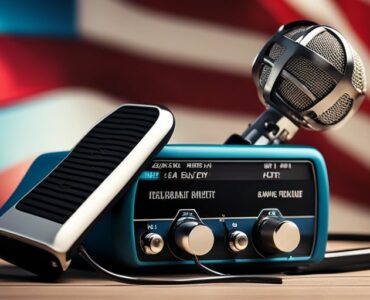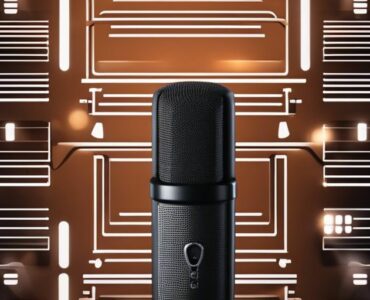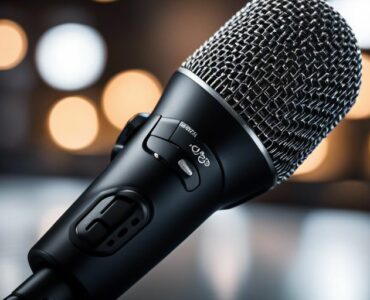In this article, we will explore the potential interference of cell phones on wireless microphones. With the widespread use of cell phones in our daily lives, it is important to understand the impact they may have on other wireless devices. We will delve into the technical aspects of how cell phones and wireless microphones function, and analyze whether or not they can coexist harmoniously. So, if you have ever wondered if your phone could disrupt a live performance or a conference, stay tuned as we uncover the truth behind cell phone interference with wireless microphones.
Table of Contents
Overview
Definition of wireless microphones
Wireless microphones are audio devices that allow for the transmission of sound without the need for a physical connection to a sound system or recording device. They consist of a microphone that captures sound and a transmitter that sends the audio signals wirelessly to a receiver, which is connected to the desired audio system. This wireless technology enables freedom of movement for performers, speakers, and presenters, making it an essential tool in various industries.
Importance of wireless microphones in various industries
Wireless microphones play a crucial role in numerous industries, ranging from entertainment and broadcasting to education and corporate settings. In the entertainment industry, wireless microphones allow performers to move freely on stage without being hindered by cords. This enhances their stage presence and overall performance quality. Similarly, in broadcasting, wireless microphones enable reporters and hosts to roam freely during live broadcasts, capturing high-quality audio without being limited to a fixed location.
In the educational field, wireless microphones facilitate effective communication between teachers and students. They amplify the teacher’s voice, ensuring that every student can hear and comprehend the lesson clearly. Wireless microphones are also widely used in corporate settings during presentations, conferences, and meetings. They enable presenters to address a large audience without being restricted by microphone cables, enhancing communication efficiency and professionalism.
Understanding Wireless Microphone Technology
Frequency usage in wireless microphones
Wireless microphones operate using specific frequency bands allocated by regulatory bodies such as the Federal Communications Commission (FCC). These frequency bands determine the range of frequencies over which the microphone can transmit and receive signals. Different frequency bands are utilized to avoid interference and ensure overall performance quality.
Types of wireless microphones based on frequency bands
Wireless microphones are available in various frequency bands, including VHF (Very High Frequency), UHF (Ultra High Frequency), and DECT (Digital Enhanced Cordless Telecommunications). VHF wireless microphones operate within the frequency range of 30 MHz to 300 MHz, while UHF wireless microphones utilize frequencies between 300 MHz and 3 GHz. DECT wireless microphones, on the other hand, employ frequencies around 1.9 GHz. Each frequency band offers different advantages and considerations, depending on the intended use and location.
Interference Issues with Wireless Microphones
Sources of interference for wireless microphones
Wireless microphones can face interference from various sources, impacting their signal quality and reliability. One common source of interference is other wireless devices operating on similar frequency bands, such as Wi-Fi routers, Bluetooth devices, and other wireless microphones. Additionally, environmental factors like physical obstacles, radio waves from nearby broadcasting stations, and electromagnetic fields can also contribute to interference.
Common interference scenarios
Interference scenarios can occur in different situations. For example, in densely populated urban areas, a high concentration of wireless devices and competing signals can cause interference. Similarly, in large venues or event spaces with multiple wireless microphones in operation, the accumulation of signals can lead to signal degradation and interference. It is essential to proactively address these scenarios to ensure clear and uninterrupted audio transmission.
Understanding Cell Phone Interference
How cell phones transmit signals
Cell phones rely on radio waves to transmit and receive signals. When making a call or using data services, cell phones emit radio signals, converting the user’s voice or data into radio waves. These radio waves travel through the air and are received by nearby cell towers, which then route the signals to their intended destinations. This constant transmission and reception of radio waves by cell phones can potentially interfere with wireless microphones operating on similar frequencies.
Cell phone frequency bands
Cell phones operate in specific frequency bands, which vary depending on the geographical region and the technology used. In the United States, the two primary frequency bands used by cell phones are the cellular band (850 to 1900 MHz) and the PCS (Personal Communications Service) band (1900 MHz). These frequency bands can overlap with certain wireless microphone frequency ranges, leading to interference issues.
Research and Studies
Studies on cell phone interference with wireless microphones
Researchers and industry experts have conducted various studies to investigate the impact of cell phone interference on wireless microphones. These studies aim to understand the extent of the problem, identify potential solutions, and educate users about interference prevention. Through careful analysis of real-world scenarios and controlled experiments, these studies provide valuable insights into the challenges associated with cell phone interference.
Effects of interference on microphone signal quality
Cell phone interference can negatively affect the signal quality of wireless microphones, leading to compromised audio performance. Interference can manifest as static, dropouts, or distortion in the sound, making it difficult for the intended audience or recording device to capture and understand the audio content. This interference-induced degradation can significantly impact the overall effectiveness of live performances, broadcasts, educational sessions, and corporate presentations.
Mitigation Techniques
Avoiding frequency overlap with cell phones
To minimize interference, it is crucial to avoid frequency overlap between wireless microphones and cell phones. This can be achieved by selecting wireless microphone systems that operate in frequency bands separate from those used by cell phones. Proper planning and coordination with frequency spectrum databases can help identify available frequency ranges and reduce the likelihood of interference.
Using digital wireless microphone systems
Digital wireless microphone systems utilize advanced technology to mitigate interference and enhance signal quality. Unlike analog systems, digital systems convert audio into digital data before transmission, allowing for improved signal integrity and resistance to interference. Digital wireless microphone systems also offer additional features such as encryption, spectrum scanning, and adaptive frequency hopping, further reducing the chances of cell phone interference.
Implementing signal filters
Signal filters can be employed to reduce the impact of interference on wireless microphones. These filters act as barriers, blocking unwanted radio signals from reaching the microphone receiver while allowing the desired audio signals to pass through. Signal filters can be particularly effective in environments with high levels of interference, helping to maintain clear and reliable microphone performance.
Regulations and Guidelines
FCC regulations for wireless microphones
The Federal Communications Commission (FCC) in the United States regulates the use of wireless microphones. They allocate specific frequency bands for wireless microphone operation and enforce rules to prevent interference. It is important to comply with FCC regulations, such as obtaining the necessary licenses and operating within authorized frequency ranges, to ensure legal and interference-free use of wireless microphones.
Government guidelines for minimizing interference
In addition to FCC regulations, governments and regulatory bodies provide guidelines and best practices to minimize interference between wireless microphones and other devices. These guidelines often recommend using frequency coordination services, selecting wireless microphone systems with robust interference resistance capabilities, and ensuring proper antenna placement and signal management. By following these guidelines, users can optimize the performance of wireless microphones and reduce the risk of interference.
Real-Life Examples of Interference
Reports of interference incidents
Numerous reports have documented instances of cell phone interference with wireless microphones in various settings. For example, during live performances, cell phone signals have caused audio dropouts and distortion, forcing performers to pause or restart their acts. Similar incidents have been reported during broadcast television events, where interference degraded the sound quality and disrupted the viewing experience for viewers. These real-life examples emphasize the importance of addressing cell phone interference to ensure seamless audio transmission.
Challenges faced by professionals
Professionals using wireless microphones often encounter challenges related to cell phone interference. Sound engineers, performers, broadcasters, and educators may have to contend with unpredictable interference issues, complicating their efforts to deliver high-quality audio. These professionals must stay informed about interference prevention techniques, keep abreast of regulatory changes, and adapt their equipment and practices accordingly to mitigate interference challenges effectively.
Interference-Free Zones
Designating areas free from cell phone use
To provide a guaranteed interference-free environment, some venues and event organizers designate specific areas as “interference-free zones.” These zones are typically intended for critical applications such as live performances, important presentations, and broadcasting. By prohibiting cell phone use within these zones, organizers can eliminate the potential for cell phone interference and ensure the highest quality audio transmission.
Benefits and challenges of interference-free zones
Interference-free zones present several benefits, including reliable audio transmission, enhanced audience experience, and improved overall sound quality. By creating controlled environments, professionals can focus on delivering their content without worrying about interference-related issues. However, establishing and enforcing interference-free zones can be challenging, as it may require significant resources, coordination with attendees, educating the audience about the purpose of these zones, and implementing effective measures to prevent cell phone use.
Conclusion
The impact of cell phone interference on wireless microphones
Cell phone interference poses a significant challenge to the reliable operation of wireless microphones in various industries. Whether it’s an entertainer performing on stage, a teacher engaging with students, or a reporter delivering breaking news, the interference caused by cell phones can disrupt audio transmission, compromise signal quality, and diminish the overall effectiveness of communication and entertainment.
Future developments in interference prevention
To address the issue of cell phone interference, ongoing research and technological advancements are being pursued. The development of more advanced wireless microphone systems with greater immunity to interference, improved frequency planning tools, and enhanced filtering techniques can help mitigate the impact of cell phone interference. Additionally, continued collaboration between regulatory bodies, industry professionals, and wireless technology manufacturers will contribute to the development of comprehensive guidelines and standards for interference prevention.















Add comment